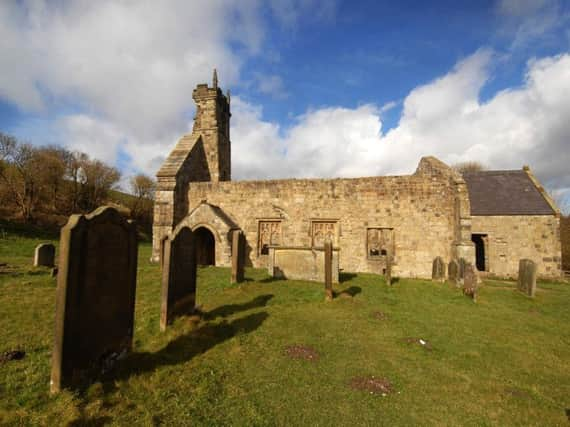Why an abandoned Wolds village that survived plague is worth a visit - Roger Ratcliffe
This article contains affiliate links. We may earn a small commission on items purchased through this article, but that does not affect our editorial judgement.


Advertisement
Hide AdAdvertisement
Hide AdIt is almost four decades since I first visited Wharram Percy, tucked away in one of the Yorkshire Wolds’ remotest dales, but at that time there was not much to see on the ground unless you had either a good imagination or a degree in archaeology.
Actually, people were not even encouraged to go there. While I was writing the official guidebook to the 79-mile Yorkshire Wolds Way prior to the path’s opening in 1982, the Countryside Commission – forerunner of today’s Natural England – took the bizarre decision not to include Wharram Percy on the 79-mile route.
I was asked to explain in the book that the village had been bypassed because “too much disturbance might be detrimental to the ancient monument”.
Advertisement
Hide AdAdvertisement
Hide AdThankfully, that attitude changed some years later and not surprisingly Wharram Percy is considered one of walk’s highlights.
Seeing it again last week for the first time in over a decade I was delighted to find that English Heritage has now installed a series of boards to interpret each part of the site for laymen like me, conjuring up the atmosphere of life in the village over three centuries before it was abandoned.
Wharram Percy flourished for around 300 years until the late 15th and early 16th century, despite part of its population succumbing to the Black Death of 1348-9, but ultimately fell victim to the feudal system of the age.
Much of the agricultural land was converted into pastures for sheep, which made England’s manorial lords extremely wealthy in late medieval times, but not the villagers who moved away.
Advertisement
Hide AdAdvertisement
Hide AdAccording to English Heritage “the last four families were evicted between 1488 and 1506”.
The most visible remnants are the shell of St Martin’s Church on the floor of lovely Deep Dale, dating from the early 12th century, and a nearby millpond which was later converted to stock fish. On a plateau above the dale are the considerably less visible remains of around 40 peasant houses grouped in three streets and interspersed with barns and other farm buildings. One of the rows contained longhouses, one of which, archaeologists were amazed to discover, had glazed windows.
To make sense of it all, it is worthwhile visiting English Heritage’s website and downloading a map which illustrates the village like a sort of brass rubbing.
After the last residents left the plateau overlooking Deep Dale all that remained of note was the church. However, a farmstead was established in the late 18th century when the pendulum of fortune swung again in this part of the Yorkshire Wolds and sheep rearing was abandoned in favour of arable farming. The farm cottages can still be seen, and the clear outline of the vicarage.
Advertisement
Hide AdAdvertisement
Hide AdNot much else remains, but it doesn’t take much imagination to appreciate how tranquil Wharram Percy must have been in such a beautiful setting. That atmosphere, at least, has not changed.